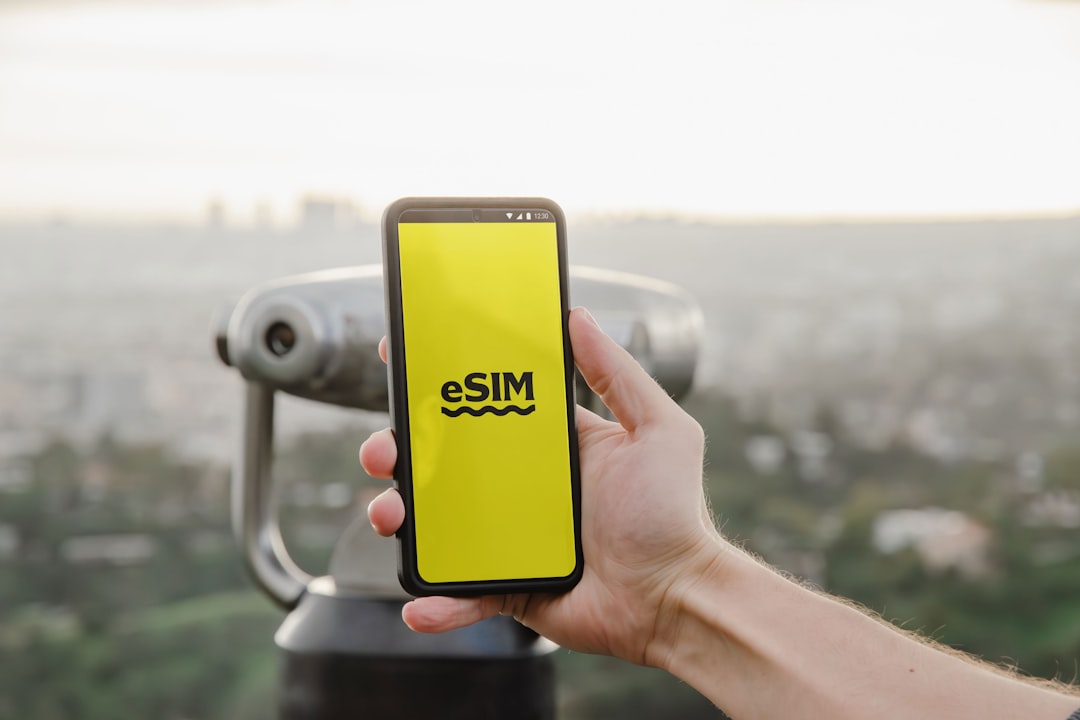First Steps Into Nomad Living

Introduction
The idea of swapping a permanent address for a suitcase, a coffee shop for a sunrise on a foreign beach, and a 9‑to‑5 routine for a calendar that moves with the sun can feel both thrilling and intimidating. “Nomad living” is more than a travel trend; it is a lifestyle choice that blends work, adventure, personal growth, and flexibility. This guide walks you through the first steps you need to take before you pack your bags, sign a lease, or book a flight. By the end, you will have a clear roadmap, a realistic budget, a minimalist packing list, and the confidence to launch your nomadic journey.
Shifting Your Mindset
Before any logistical planning begins, you need to align your mindset with the realities of a location‑independent life.
- Embrace uncertainty – Nomad life is full of surprises. Learning to see the unknown as an opportunity rather than a threat will keep you adaptable.
- Focus on experiences, not possessions – The value of a nomadic lifestyle comes from the moments you collect, not the things you own.
- Prioritize flexibility – Rigid schedules and strict routines can become obstacles. Build habits that can bend without breaking.
- Accept responsibility for your own well‑being – Without a fixed support system, you become the primary source of health, safety, and motivation.
Developing this mental framework helps you make decisions that align with long‑term satisfaction rather than short‑term comfort.
Clarify Your “Why”
Understanding the core reasons behind your desire to become a nomad is essential. Write down the top three motivations and revisit them whenever doubts arise.
- Freedom to explore – Is the pull of new cultures, languages, and landscapes the main driver?
- Work‑life integration – Do you want a career that lets you work from anywhere, or are you looking to escape a toxic office environment?
- Personal growth – Are you seeking challenges that push you out of your comfort zone and foster self‑discovery?
- Financial independence – Does the idea of living with less and saving more appeal to you?
When your “why” is clear, it becomes easier to set priorities, choose destinations, and stay motivated during tough patches.
Building a Solid Financial Foundation
Money is the most common stumbling block for new nomads. A realistic financial plan prevents stress and gives you the freedom to enjoy the journey.
Assess Your Income
- Remote job – If you already have a location‑independent role, confirm that your employer supports travel and flexible hours.
- Freelance work – Identify the services you can offer (writing, design, programming, consulting) and estimate a monthly income based on current rates.
- Passive income – Consider dividend stocks, rental properties, digital products, or affiliate marketing as supplemental revenue streams.
Calculate Your Budget
Create a simple spreadsheet with the following categories:
- Accommodation – Hostels, Airbnb, co‑living spaces, or short‑term rentals.
- Food – Groceries, street food, occasional dining out.
- Transportation – Flights, trains, buses, local transport, car rentals.
- Insurance – Health, travel, and equipment coverage.
- Digital tools – VPN, cloud storage, software subscriptions.
- Entertainment & experiences – Tours, activities, events.
- Emergency fund – At least three months of living expenses set aside in an easily accessible account.
Add a buffer of 10‑15 % for unexpected costs. If your projected expenses exceed your income, explore ways to increase earnings or reduce spending before you depart.
Set Up Financial Logistics
- Banking – Choose a bank with low foreign transaction fees and a reliable online platform. Consider a digital bank that offers multi‑currency accounts.
- Credit cards – Obtain a card with no foreign transaction fees and solid travel protections. Keep a backup card stored separately.
- Currency exchange – Use apps that provide real‑time rates and allow you to hold multiple currencies. Avoid airport kiosks.
- Tax considerations – Research your home country’s tax residency rules. Some nomads become tax expatriates, while others maintain residency and file annually. Consulting a tax professional can save you headaches later.
Minimalist Packing: What to Take and What to Leave
The less you carry, the easier it is to move. A well‑curated packing list saves space, weight, and mental clutter.
Core Clothing
- Versatile tops – 3‑4 shirts that can be dressed up or down.
- Bottoms – 2 pairs of pants (one casual, one smarter) and 1 pair of shorts or a skirt.
- Layering pieces – A lightweight sweater or fleece and a compact waterproof jacket.
- Footwear – A pair of comfortable walking shoes, sandals or flip‑flops, and optional dress shoes.
- Undergarments – Enough for a week; plan to do laundry regularly.
Tech Essentials
- Laptop or tablet – Your primary work device, with a protective case.
- Smartphone – With an unlocked SIM slot.
- Portable charger – At least 10,000 mAh.
- Adapters – Universal travel adapter covering the regions you plan to visit.
- External hard drive – For backups.
Personal Care
- Toiletries – Travel‑size shampoo, soap, toothbrush, razor.
- First‑aid kit – Band‑aids, pain relievers, any prescription medication.
- Reusable water bottle – Eco‑friendly and handy for long travel days.
Miscellaneous
- Backpack or carry‑on – A 30‑40 L travel backpack works for most trips.
- Daypack – Small bag for daily excursions.
- Travel documents – Passport, visas, travel insurance, digital copies stored securely.
- Notebook or journal – For ideas, plans, and reflections.
Remember the “one‑in, one‑out” rule: every time you add something new, remove something else.
Choosing Your First Destination
Your inaugural location sets the tone for the rest of your journey. Consider the following factors when making a decision.
Cost of Living
Countries in Southeast Asia, Central America, and Eastern Europe often provide a lower cost of living while still offering reliable internet and vibrant expat communities.
Visa Flexibility
Some nations allow 30‑day visa‑free entry for many passports, while others offer digital nomad visas that grant longer stays. Research the visa policy that aligns with your timeline.
Language Barrier
If you are not fluent in the local language, a destination where English is widely spoken can reduce initial friction. However, immersing yourself in a non‑English environment can accelerate language learning.
Infrastructure
Check for coworking spaces, reliable Wi‑Fi, and a good public transport network. Online nomad forums and cost‑of‑living calculators are valuable resources.
Lifestyle Fit
Think about climate preferences, cultural interests, safety, and social scene. A beach lover might gravitate toward Bali, while a mountain enthusiast may prefer Medellín’s surrounding hills.
Create a shortlist of three places, then spend a week researching each—reading blogs, watching YouTube videos, and joining local Facebook groups. This deeper dive will reveal hidden pros and cons.
Navigating Visas and Legalities
Visas are often the most confusing part of nomad planning. Follow these steps to stay compliant.
- Check passport requirements – Use official government websites or reputable visa‑information portals.
- Determine visa type – Tourist visa, business visa, or a dedicated digital nomad visa. Each has different durations and work allowances.
- Gather documentation – Passport copies, proof of income (bank statements or employment letters), health insurance, and sometimes a criminal background check.
- Apply early – Some visas require weeks of processing. Apply at least one month before your planned departure.
- Track expiration dates – Set calendar reminders for visa renewal or exit deadlines.
- Understand tax implications – Some countries may tax income earned while you are physically present. Look for tax treaties between your home country and the destination.
If a destination’s visa rules are too restrictive, consider a “visa hopping” strategy—moving between nearby countries with more lenient entry policies.
Securing Temporary Accommodation
Your first few weeks need a comfortable base where you can work and settle in.
Short‑Term Options
- Hostels with private rooms – Affordable and often have common areas for socializing.
- Airbnb or Vrbo – Offers privacy and the ability to choose amenities such as a kitchen.
- Co‑living spaces – Communities designed for remote workers, providing both accommodation and coworking facilities.
- Couchsurfing – Free stays with locals, great for cultural immersion but may lack work‑friendly spaces.
Booking Strategies
- Book a flexible stay – Look for listings with free cancellation or a “flexible dates” policy.
- Read reviews carefully – Focus on comments about Wi‑Fi speed, noise levels, and cleanliness.
- Contact hosts – Ask specific questions about workspace, power outlets, and any local coworking discounts.
- Consider location – Proximity to grocery stores, public transport, and a safe neighborhood matters more than being in a tourist hotspot.
Once you have a foothold, you can explore longer‑term rentals in the area, often at a lower cost.
Setting Up a Reliable Remote Work Environment
Your productivity hinges on a stable digital setup. Here’s how to prepare.
Internet Connectivity
- Test speeds before you arrive – Websites like Speedtest.net show average download/upload rates for most cities.
- Invest in a portable hotspot – A global SIM card or a device like Skyroam can be a lifesaver in areas with unreliable broadband.
- Identify coworking spaces – Many cities have affordable day passes, often with fast internet, printers, and meeting rooms.
- Backup plan – Locate nearby cafés or libraries with free Wi‑Fi as a contingency.
Workspace Ergonomics
- Portable laptop stand – Improves posture and reduces neck strain.
- External keyboard and mouse – Makes long typing sessions more comfortable.
- Noise‑cancelling headphones – Essential for focus in noisy environments.
Productivity Tools
- Project management – Asana, Trello, or Notion to keep tasks organized.
- Time tracking – Toggl or Clockify if you bill by the hour.
- Communication – Slack, Microsoft Teams, or Discord for client and team interactions.
- File storage – Google Drive, Dropbox, or OneDrive for seamless collaboration.
Security Measures
- VPN – Protects data on public Wi‑Fi and helps access geo‑restricted services.
- Two‑factor authentication – Enable for all accounts that store sensitive information.
- Regular backups – Schedule automatic cloud backups to avoid data loss.
Health, Safety, and Well‑Being
Staying healthy on the road is a combination of preparation and ongoing care.
Health Insurance
- Choose a plan that covers medical evacuation – Critical for remote locations.
- Check coverage for pre‑existing conditions – Some policies exclude them.
- Keep digital and printed copies of your insurance card – Store them in a cloud folder and a physical wallet.
Vaccinations and Medications
- Visit a travel clinic – Get recommended vaccines for your destination (e.g., Hepatitis A/B, Typhoid, Yellow Fever).
- Carry a basic medication kit – Include antibiotics, antihistamines, and any prescription meds with a copy of the prescription.
- Know local pharmacy hours – In some countries, pharmacies close early on weekends.
Personal Safety
- Research safety ratings – Use sources like the U.S. Department of State travel advisories.
- Stay aware of surroundings – Avoid poorly lit streets at night and keep valuables out of sight.
- Secure your belongings – Use a lock for luggage and a hidden money belt for cash and passport.
Mental Health
- Routine – Establish a daily schedule that includes work, exercise, and leisure.
- Stay connected – Regular video calls with friends and family help combat loneliness.
- Local community – Join expat meet‑ups, language exchanges, or hobby groups.
- Mindfulness – Practice meditation, journaling, or breathing exercises to manage stress.
Building Community on the Move
Human connection enriches the nomadic experience. Here are ways to meet people and create a support network.
- Coworking spaces – Host events, workshops, and happy hours that attract other remote workers.
- Digital nomad groups – Platforms like Nomad List, Remote Work Hub, and Reddit’s r/digitalnomad host discussions and meet‑up announcements.
- Language exchanges – Tandem or local cafés often organize language‑practice nights, offering cultural immersion and new friendships.
- Volunteer – Short‑term projects give you a purpose and a chance to meet locals.
- Social media – Follow local Instagram accounts, join Facebook groups, and attend events posted on Meetup.com.
Being proactive about community building reduces the sense of isolation and provides practical tips from people who have already navigated the same city.
Essential Tools and Resources
A reliable toolbox makes nomad life smoother. Below is a curated list of free and paid resources.
Planning & Research
- Nomad List – Cost‑of‑living data, internet speeds, and community ratings for hundreds of cities.
- Travel + Leisure “Best Places to Live and Work” – Annual articles highlighting emerging nomad hubs.
- Google Flights – For tracking cheap airfare with price alerts.
Money Management
- Wise (formerly TransferWise) – Low‑cost international money transfers and multi‑currency accounts.
- Revolut – Offers disposable virtual cards, budgeting tools, and crypto features.
- Mint – Simple budgeting app that syncs with most banks.
Accommodation
- Airbnb – Short‑term rentals with flexible cancellation.
- Hostelworld – Budget hostels with private room options.
- Couchsurfing – Free stays with locals for cultural exchange.
Productivity
- Notion – All‑in‑one workspace for notes, databases, and project tracking.
- Zapier – Automates repetitive tasks across apps.
- Calendly – Easy scheduling for meetings across time zones.
Health
- World Health Organization (WHO) Travel Advice – Up‑to‑date health risk information.
- Travel Insurance Review Websites – Compare policies and read real user experiences.
Community
- Slack Communities – Remote Work Hub, Digital Nomads, and specific city channels.
- Discord Servers – Nomad Discord offers voice chat rooms for various locations.
- Meetup.com – Search for local events ranging from tech talks to hiking groups.
Common Pitfalls and How to Avoid Them
Even seasoned nomads stumble. Recognizing common mistakes early helps you stay on track.
- Overpacking – Leads to heavy luggage and unnecessary expenses. Stick to the minimalist list and reassess after each move.
- Ignoring visa deadlines – Can result in fines or forced departure. Set multiple calendar reminders and keep copies of all visa paperwork.
- Underestimating internet costs – Some destinations charge high rates for mobile data. Research local SIM options and budget accordingly.
- Neglecting health insurance – Unexpected medical bills can quickly drain savings. Verify coverage before each trip.
- Working without boundaries – Mixing work and travel without structure can cause burnout. Define work hours and stick to them.
- Isolating yourself – Loneliness reduces motivation. Prioritize social activities and community involvement.
- Spending more than you earn – Lifestyle creep is common when you’re constantly in new places. Track expenses weekly and adjust habits as needed.
By planning ahead and regularly reviewing your situation, you can mitigate these risks.
Crafting Your Personal Action Plan
Turn the information above into a concrete plan you can follow over the next month.
- Write down your top three “why” statements – Keep them visible on your desk or phone wallpaper.
- Create a budget spreadsheet – List all income sources and expense categories, then calculate the monthly surplus or deficit.
- Choose a destination shortlist – Research cost of living, visa options, and internet quality for each.
- Apply for any required visas – Gather documents, fill out forms, and submit applications.
- Secure health insurance – Compare plans, choose one that covers your destination, and keep policy details handy.
- Sell or store excess belongings – Use online marketplaces or donation centers to reduce clutter.
- Purchase essential tech gear – Order any missing items (portable charger, adapters) to avoid last‑minute scrambling.
- Book initial accommodation – Reserve a place with a flexible cancellation policy for the first two weeks.
- Set up digital tools – Install VPN, productivity apps, and backup solutions on your devices.
- Schedule a “pre‑departure” check – Two weeks before leaving, confirm flight details, passport validity, and all travel documents.
Treat this checklist as a living document. Adjust dates and tasks as circumstances change, but keep moving forward.
Final Thoughts
Starting a nomadic life is a blend of practical preparation and inner readiness. By clarifying your motivations, establishing a solid financial base, choosing a suitable first destination, and setting up reliable work and health systems, you lay the groundwork for a sustainable and rewarding adventure. The journey will inevitably present challenges, but each obstacle is also an opportunity to learn, adapt, and grow.
Remember that nomad living is not a one‑size‑fits‑all formula. Your path will be uniquely yours, shaped by the places you visit, the people you meet, and the work you do. Embrace the flexibility, stay curious, and let the world become your office, classroom, and home.
Now, take the first step: open that spreadsheet, book that flight, and let the story of your nomadic life begin.
Random Posts

Thailand Cost of Living Guide for Digital Nomads
Discover how much you really need to live and work in Thailand. Get city-by-city cost breakdowns, budget hacks and essential visa tips so you can enjoy a high-quality nomad lifestyle without overspending.
2 months ago

The Ultimate Nomad Resource Hub Apps Books Podcasts and Online Courses
Discover the ultimate nomad toolkit: curated apps, books, podcasts and courses that boost productivity, simplify travel and help you thrive anywhere. Build your perfect remote life arsenal today.
2 months ago

Cultural Hotspots Where Work Meets Adventure in Europe
Explore Europe’s top cultural hotspots where reliable internet, vibrant coworking scenes and affordable living blend with historic charm, cafes, rivers and mountain thrills - perfect for digital nomads seeking work and adventure
2 months ago

Remote Ready Insider Tips for Living in the Worlds Most Nomad Friendly Countries
Discover insider tips to thrive as a remote worker in the world’s most nomad-friendly countries, from choosing the right destination and visa to securing fast internet and navigating local culture.
1 month ago

Building a Freelance Empire While Traveling the World
Learn how to turn travel into profit by building a solid freelance business: adopt a freedom-first mindset, set up reliable income systems, and use essential tools so you can work from any sunrise without sacrificing stability
1 week ago
Latest Posts

Essential Software Every Remote Professional Should Use
Master remote work with essential tools: instant messaging like Slack, high definition video calls such as Zoom, and asynchronous voice apps. Streamline communication, stay connected and boost productivity.
1 day ago

Mastering Remote Work Productivity for Digital Nomads and Freelancers
Learn proven habits, tools, and tactics that help digital nomads and freelancers stay focused, deliver quality work, and maintain a sustainable lifestyle while traveling the world.
1 day ago

Tech‑Friendly European Towns Perfect for Remote Living
Discover Europe’s best small towns where fast internet, affordable living and vibrant tech communities let you work remotely while soaking up historic charm, lakeside views or mountain air.
1 day ago